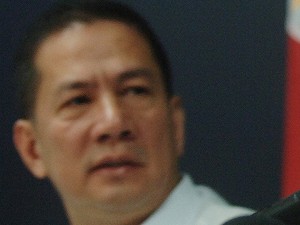DFA slams Chinese report on agreement on Unclos
The Department of Foreign Affairs (DFA) has disputed a report posted on the website of the Chinese Embassy in Manila that claims that both the Philippines and China agree that the United Nations Convention on the Law of the Sea (Unclos) “cannot be utilized as a legal ground to claim territorial sovereignty.”
“Therefore, the fact that Huangyan Island (Panatag or Scarborough Shoal) is within the 200 nautical miles Exclusive Economic Zone or continental shelf of Luzon Island has no relevance in determining sovereignty either,” said the report titled “The Standoff between Beijing and Manila around the Huangyan Island: Who owns the shoal?”
The report was written by Gao Jianjun, international law professor at China University of Political Science and Law in Beijing.
The Philippines refers to the disputed rock formation as Bajo de Masinloc and Panatag Shoal.
In a text message to the Philippine Daily Inquirer, DFA spokesperson Raul Hernandez on Sunday reiterated the Philippine position that “under Unclos, the Philippines exercises exclusive sovereign rights over its Exclusive Economic Zone (EEZ) and continental shelf.”
Relaying inaccurate info
The Bajo de Masinloc is located 124 nautical miles west of Zambales, which is “well within the 200-nautical mile EEZ and continental shelf of the Philippines as provided under Unclos,” Hernandez said.
Last month, the foreign office temporarily stopped diplomatic meetings with the Chinese embassy, charging the Chinese diplomats with relaying inaccurate information to Beijing.
The DFA had accused Chinese Ambassador Ma Keqing of wrongfully conveying a nonexistent agreement of a pullout of all vessels in the Panatag Shoal area.
Hernandez clarified that what was agreed upon in earlier meetings was for the Philippine and Chinese sides to refrain from doing anything that would increase tensions in the disputed area.
Foreign Secretary Albert del Rosario had said that the inaccuracy of information being relayed to China could somehow trigger different protocols.
The DFA head recalled that during the third meeting with the Chinese side, Ma informed the foreign office that Beijing was becoming more assertive because Manila had violated an agreement.”
‘No agreement’
“I said…there was no agreement. That’s why we are in a stalemate. They were harping that we didn’t honor an agreement. I felt I should clarify that with the Chinese government, it seems that report was not accurate,” Del Rosario told a recent DFA press briefing.
The Philippines only recently appointed an ambassador to Beijing.
In his report, Gao noted that “since 1997, the Philippine side has disputed China’s sovereignty over Huangyan Island… It is interesting to note that both sides agree that geographical proximity is not a mode of acquiring territory under international law. Thus, the fact that Huangyan Island is closer to the Philippines than China has no consequence for the settlement of the dispute.”
First discovered by China
According to Beijing, the basis of its sovereignty over Huangyan Island is: “It is China that first discovered this island, gave it the name, incorporated it into its territory and exercises jurisdiction over it,” while Manila asserts that “the Philippines has exercised both effective occupation and effective jurisdiction over Bajo de Masinloc since its independence.”
“Thus, both sides take the occupation of terra nullius as the legal basis of their claim to the island in question,” he said.
Gao said Huangyan Island was discovered by China. He also pointed out that “all the official maps published by the Chinese governments of different periods marked Huangyan Island as Chinese territory.”
Scientific expeditions
“Many scientific expedition activities, authorized or endorsed by Chinese authorities, were held on the island,” he added.
He recalled that “a Philippine flag was put up on the island by two Philippine congressmen in 1997, and the baseline around Huangyan Island was delineated in 2009.”
“However, these activities were undertaken after the Philippines had challenged Chinese sovereignty over Huangyan Island and for the purpose of improving the legal position of Manila. According to the relevant jurisprudence of the international tribunals, such activities should not be taken into consideration in the determination of a territorial dispute,” argued Gao.
